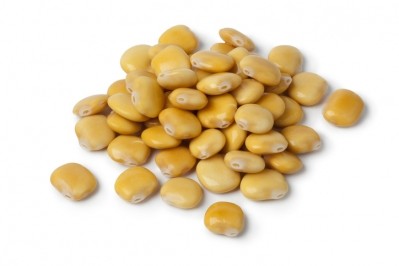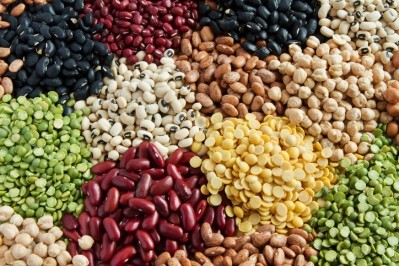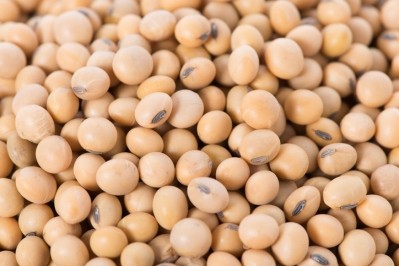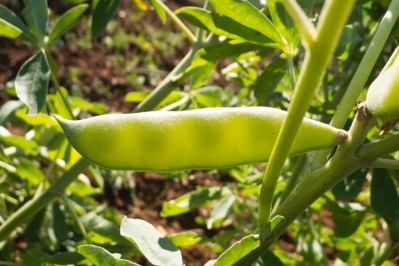Are carbon credits one way to boost European plant protein supplies?
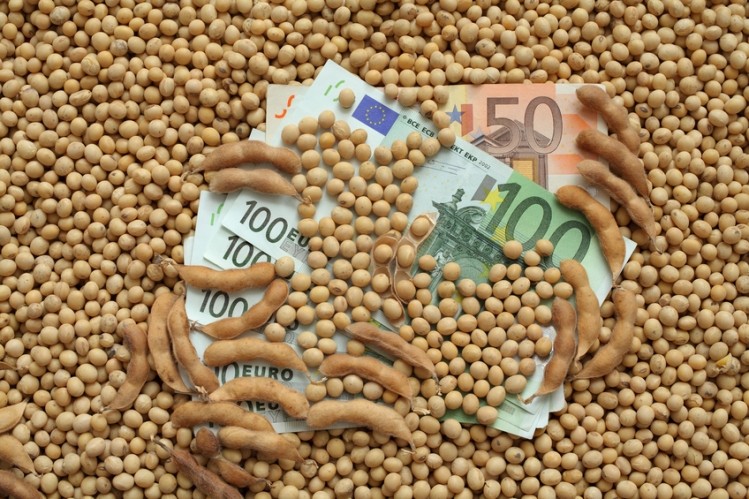
David McNaughton, managing director of Soya UK, a Hampshire based seed merchants specialized in niche and protein crops, has called on the Commission to initiate a process whereby a carbon credit could be given for legume crop cultivation as a way to further stimulate soy, lupin and other protein crop growing within Europe.
He was speaking late last month at a hearing of the EU Commission’s DG Agri committee on agriculture and rural development on how to improve European plant protein supplies.
Chinese demand
McNaughton noted the danger of the EU relying so heavily on imported soy for its livestock protein needs, particularly as pressure on soy production will increase due to continuing Chinese market demand, and soy yields, he reckoned, having reached their potential:. “The problem is going to get worse. Chinese will probably take 100m tons of soy off the market in the next five years, so we need to take action now.”
The real issue is dependency, and not GMOs, which are just a side show in relation to this, stressed McNaughton.

But when asked how the EU can replace 30m tons of protein imports, he said:
“I have looked at all sorts of ideas. The most saleable idea to the European public is an integrated proteins policy, one that integrates the three main grades, the foliar legumes, the soy and lupins, and the peas and the beans. Because if we integrate those crops, and we do it right, we can move towards protein independence in Europe.”
Nitrogen fixation
He said EU policy needs to recognize the one thing those three crop grades have in common: nitrogen fixation.
And recognition of the energy value from nitrogen fixation is critical for the further development of European protein crops: "The carbon credit model is the way to go," added McNaughton.
Soy or lupin crops will fix in excess of 220kg of nitrogen per hectare. This is the equivalent of 638kg of ammonium nitrate which would require around 210 liters of natural gas to manufacture, he explained.
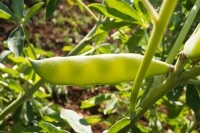
“That is a better energy balance calculation that any energy crop that we are currently putting European taxpayers’ money into today. We are actually supporting the wrong crops. If we want to save the planet and encourage proteins at the same time, let’s go the carbon route, that will give us the integrated approach, as it will draw those three crop grades together under one policy for the first time,” added McNaughton.
Amino acid profile
He said it is important to understand why the EU is importing 25m to 30m tons of soy and soymeal off the world market every year.
“The answer as to why the EU is so dependent on imported soy for the last 15 to 20 years lies in amino acid profile. Soy is high in sulphur amino acids [lysine and methionine] and it is those that make modern livestock work. The modern genetics of a modern chicken, a modern pig or modern dairy cow that is on a 10,000 liter lactation calls for a huge amount of lysine and methionine …
“So for a lot of high yielding, high genetic production livestock like broiler chickens, etc., those animals cannot be fed on a low grade protein, because they simply do not perform, [or] they will perform but not in line with the economic expectation of modern farming.
“It is not an easy system to unpick because the genetics of the animals is intrinsically tied to the grade of fuel they require. Soy will provide that fuel. The only other crops that will emulate it are lupins. Lupins have high protein content, in the region of 40% so they can compete with the protein content of soy. Soy has 44 to 47% of protein, while peas and beans have roughly 25% protein content,” said McNaughton
The case for greater EU protein production
So, he concluded, while soy and lupins are the two crops that will give equivalent protein quality, peas and beans will provide a very valuable protein contribution and can be processed to improve their nutritional profile.
The EU, he added, should also make full use of foliar protein sources, such as clovers, lucerne and vetches.
Maximizing production of soy within Europe, he said, can be done without necessarily permitting the use of GMOs since the herbicide options do exist to allow effective and economic production of non GMOs which will achieve similar yields.
What held back soy production in Europe was the 1992 Blair House Agreement, said McNaughton.
The agreement was a major problem for soy since it categorized it as an oilseed along with oilseed rape, he said. As a result, he said, the level of support has been disproportionately lower than other crops for many years, added McNaughton.

“While reforms have helped by including soy in the greening category along with other legumes, it is important that soy is not shackled to the fate of oilseed rape within the EU in the long term,” said McNaughton.
Europe must also maximize the production of lupin protein and encourage their use in forage.
In theory, lupins ought to be a huge crop in Europe and around the world, but for technical reasons of disease control and genetic stability, the crop has only really come into its own over the last 20 years, said McNaughton.
As a latecomer, the acreage has remained small. “But lupins are undervalued and underrated,” he said.
Europe must also encourage cultivation of peas and beans, while investigating ways of upgrading their protein content and quality of to make them a more practical option for soy replacement, he continued.
“Manufacturing pea protein isolates is straightforward and relatively low tech. We don’t do a lot of it and I have no idea why,” said McNaughton.
